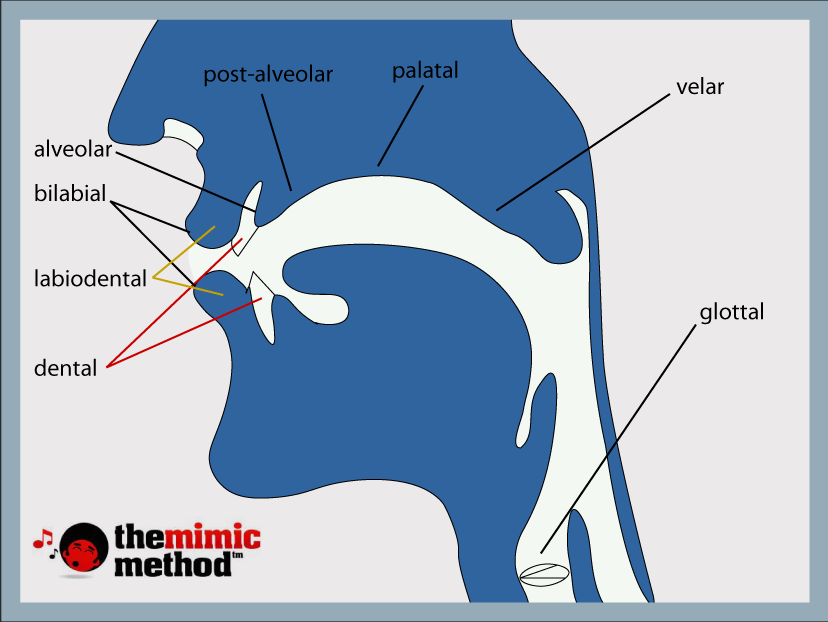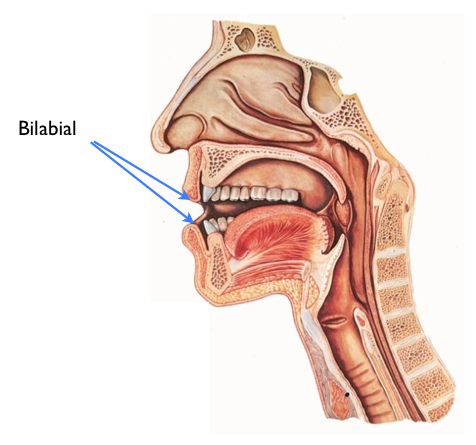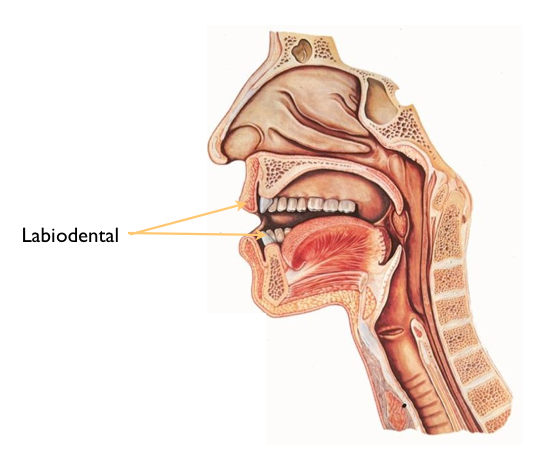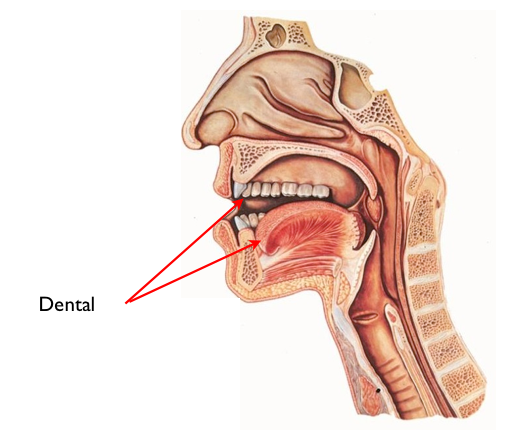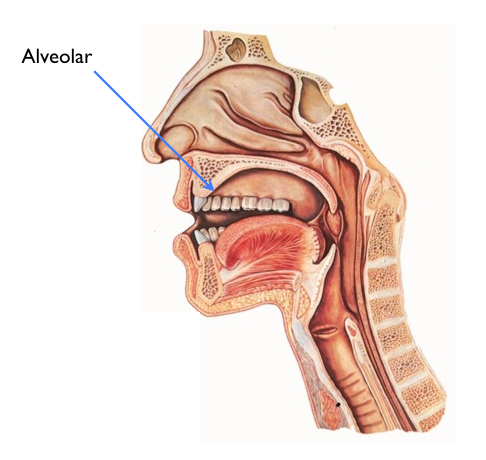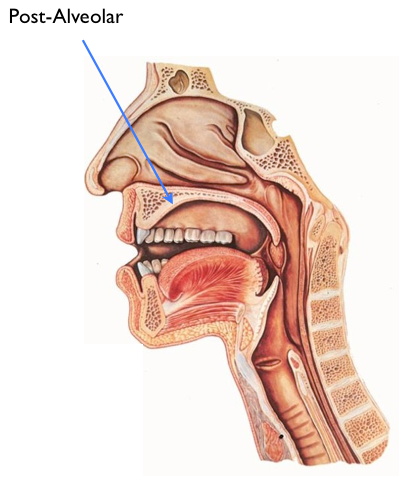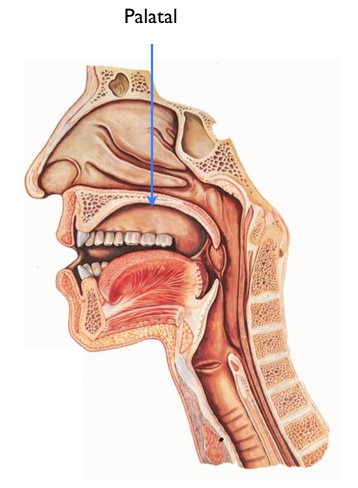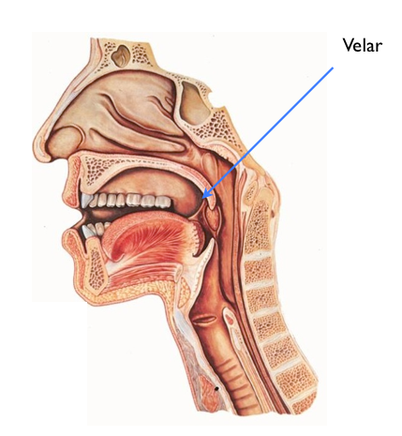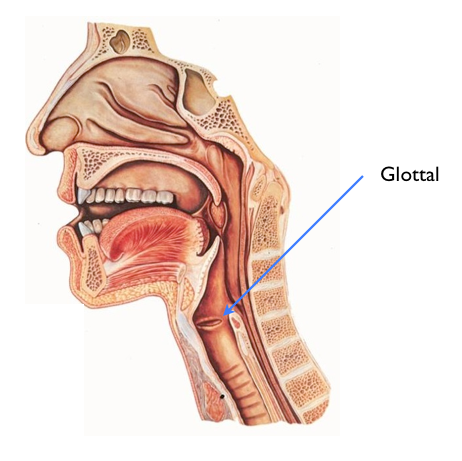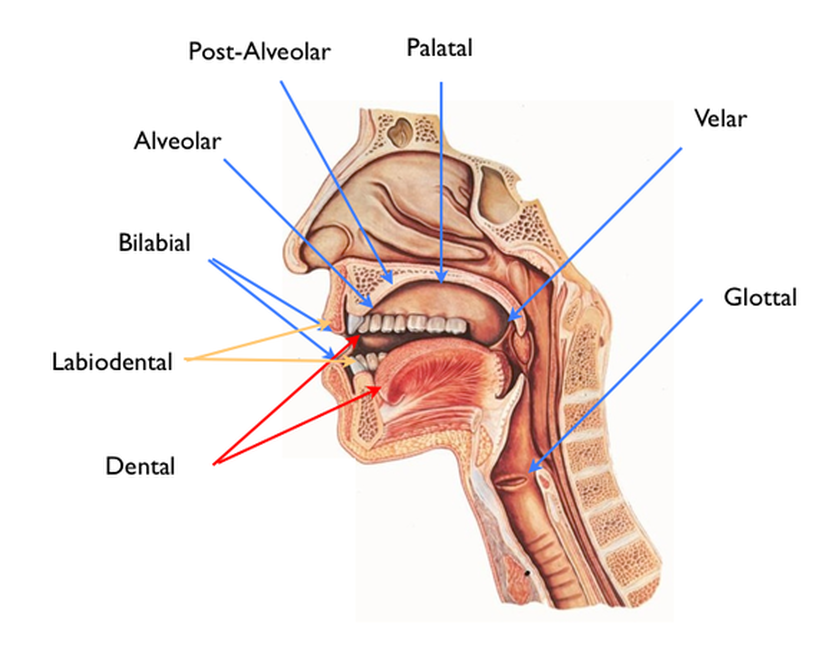Mẹo Hướng dẫn Manner of articulation là gì Chi Tiết
Pro đang tìm kiếm từ khóa Manner of articulation là gì được Cập Nhật vào lúc : 2022-03-30 18:50:05 . Với phương châm chia sẻ Mẹo về trong nội dung bài viết một cách Chi Tiết 2022. Nếu sau khi Read Post vẫn ko hiểu thì hoàn toàn có thể lại phản hồi ở cuối bài để Mình lý giải và hướng dẫn lại nha.
The diagram below gives a view of the human mouth with arrows pointing to the places of articulation used in English.
In other words, these are the places where the constrictions and obstructions of air occur.
On this page, I will do the following for you:
- Explain each of these place of articulation in detail.
- List the English consonant sounds that occur each place of articulation.
- Provide audio examples for you to hear and contextualize these sounds.
As you follow along, be sure to say the sounds and example English words out loud so that you can feel the places of articulation in your own mouth.
Bilabial consonants occur when you block/constrict airflow out of the mouth by bringing your lips together.
English contains the following three bilabial consonants:
- /p./ as in “p.urse” and “rap.“
- /b/ as in “back” and “cab“
- /m/ as in “mad” and “clam“
Labio-dental consonants occur when you block/constrict airflow by curling your lower lip back and raising it to touch your upper row of teeth.
English contains the following two labio-dental sounds:
- /f/ as in “fro” and “calf“
- /v/ as in “vine” and “have”
Dental consonants occur when you block/constrict airflow by placing your slimy tongue against your upper teeth.
English contains the following two labio-dental sounds:
- /θ/ as is “thick” and “bath“
- /ð/ as in “the” and “rather”
The alveolar ridge is where your teeth meet your gums.
You create Alveolar consonants when you raise your tongue to the alveolar ridge to block or constrict airflow.
The English alveolar consonants are as follows:
- /n/ as in “no” and “man“
- /t/ as in “tab” and “rat“
- /d/ as in “dip” and “bad“
- /s/ as in “suit” and “bus“
- /z/ as in “zit” and “jazz“
- /l/ as in “luck” and “fully”
When you retract your tongue back just a bit from the alveolar ridge, the sounds change enough to be recognized as distinct consonants.
So post-alveolar consonants are those that occur when the tongue blocks or constricts airflow the point just beyond the alveolar ridge.
The post-alveolar english consonants are as follows:
- /ʃ/ as in “shot” or “brash”
- /ʒ/ as in “vision” or “measure”
- /tʃ/ as in “chick” or “match”
- /dʒ/ as in “jam” or “badge“
The roof of your mouth is the hard palate. You may know it as “the place that burns like hell when I eat pizza that is too hot.”
You create Palatal consonants when you raise the tongue to this point and constrict airflow.
English has only one palatal consonant:
- /j/ as in “yes” and “bayou”
Behind your hard palate you have the velum or soft palate. Unlike the bony hard palate in front of it, the this consists of soft, mucousy tissue.
You make Velar Consonants when you raise the back of your tongue to the velum to block or restrict airflow.
English has the following velar consonants:
- /ŋ/ as in “going” and “uncle” (note that the ‘n sound’ in these words is NOT made the alveolar ridge, which is why it is distinct from /n/).
- /k/ as in “kite” and “back“
- /g/ as in “good” and “bug“
- /w/ as in “wet” and “howard”
The glottis is actually two vocal folds (i.e. vocal cords). It acts as a sort of bottle cap to your windpipe.
Inhale and then hold your breath for a few seconds while keeping your mouth open. What you are actually doing to keep the air from expelling out of your lungs by closing your glottis.
Glottal consonants aren’t actually consonants; they just play consonant roles in the language. In English, the following things happen the glottis:
- /h/ as in “hi” and “Bahamas.” Say these words and notice how you’re not actually constricting or blocking airflow for this /h/ sound. You’re just exhaling a little bit harder than you would for a normal vowel sound in transition to the following vowel sound.
- /?/ – This is actually the culprit behind many of the “silent syllables” we discussed in the first lesson. For example, in the phrase “wha(t) time is it?” the /t/ in “what” is dropped and the vowel sound before it is closed the glottis.
It takes a bit of time to develop a physical awareness of your speech organ. There are two reasons for this:
Remember that whether you see it or not, the muscles of the speech organ can be controlled.
Don’t ever let anyone tell you that you’re incapable of a human speech sound. It’s just a question of knowing and practicing.
Come back to this page as often as you need to review this information.
Here’s the full chart again for your viewing pleasure:
Before we move on I want to make a few important points:
- I do NOT list all the possible places of articulation for human speech. These are just the ones for General American English.
- I do NOT list all the possible consonant sounds. These are also just for General American English.
To recap, the place of articulation is not the only feature that determines the sound of a consonant. There is also manner of articulation and phonation.
On the next page we will review these same English consonant sounds from their Manner of Articulation.
Subscribe Below for Free Audio Guide for Pronunciation
Share Link Down Manner of articulation là gì miễn phí
Bạn vừa Read nội dung bài viết Với Một số hướng dẫn một cách rõ ràng hơn về Clip Manner of articulation là gì tiên tiến và phát triển nhất và Chia Sẻ Link Down Manner of articulation là gì Free.

Hỏi đáp vướng mắc về Manner of articulation là gì
Nếu sau khi đọc nội dung bài viết Manner of articulation là gì vẫn chưa hiểu thì hoàn toàn có thể lại phản hồi ở cuối bài để Ad lý giải và hướng dẫn lại nha
#Manner #articulation #là #gì
